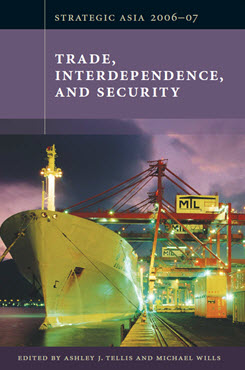Will Economic Interdependence Encourage China's and India's Peaceful Ascent?
This chapter examines how economic interdependence has shaped the emergence of new great powers, as well as the responses of existing powers to their rise, and explores how these historical patterns might apply to 21st century Asia, particularly to relations among the U.S., China, and India.
EXECUTIVE SUMMARY
This chapter examines how economic interdependence has shaped the emergence of new great powers, as well as the responses of existing powers to their rise, and explores how these historical patterns might apply to 21st century Asia, particularly to relations among the U.S., China, and India.
MAIN ARGUMENT
- In the last 500 years, no new great power has managed to evade substantial warfare around the time of its entry into elite status.
- Economic interdependence is hardly a “silver bullet” guaranteed to pacify interstate conflicts. Though it may constrain conflict escalation processes, interdependence also generates serious economic frictions that can easily offset or overwhelm its conflict-suppressing effects.
POLICY IMPLICATIONS
- China’s compliance with trade commitments needs to be monitored and enforced; little is to be gained, however, by bilateralizing economic frictions. In particular, U.S. legislation aimed at China-specific trade and exchange rate regulation and executive branch punitive actions directed at China are best avoided. If Chinese leaders lower their estimates of the future benefits of trade and cross investment, then economic interdependence will be less likely to constrain their political and military behavior.
- While the U.S.-Indian rapprochement is a welcome development, tighter integration of India into the U.S. strategic network, bolstering India’s strategic capabilities, and overt attempts to use India as a strategic counterweight to help contain China carry the risk of triggering unwanted Chinese countermeasures.
- If the U.S. should fail to innovate on a virtually continuous basis in the 21st century the country will be faced with ongoing losses of market shares and employment to hard-charging, low-cost challengers, such as China and India, as they converge on the industries associated with the last cluster of technological innovations.
Strategic Asia
The Strategic Asia annual edited volume incorporates assessments of economic, political, and military trends and focuses on the strategies that drive policy in the region. Learn more about Strategic Asia.


